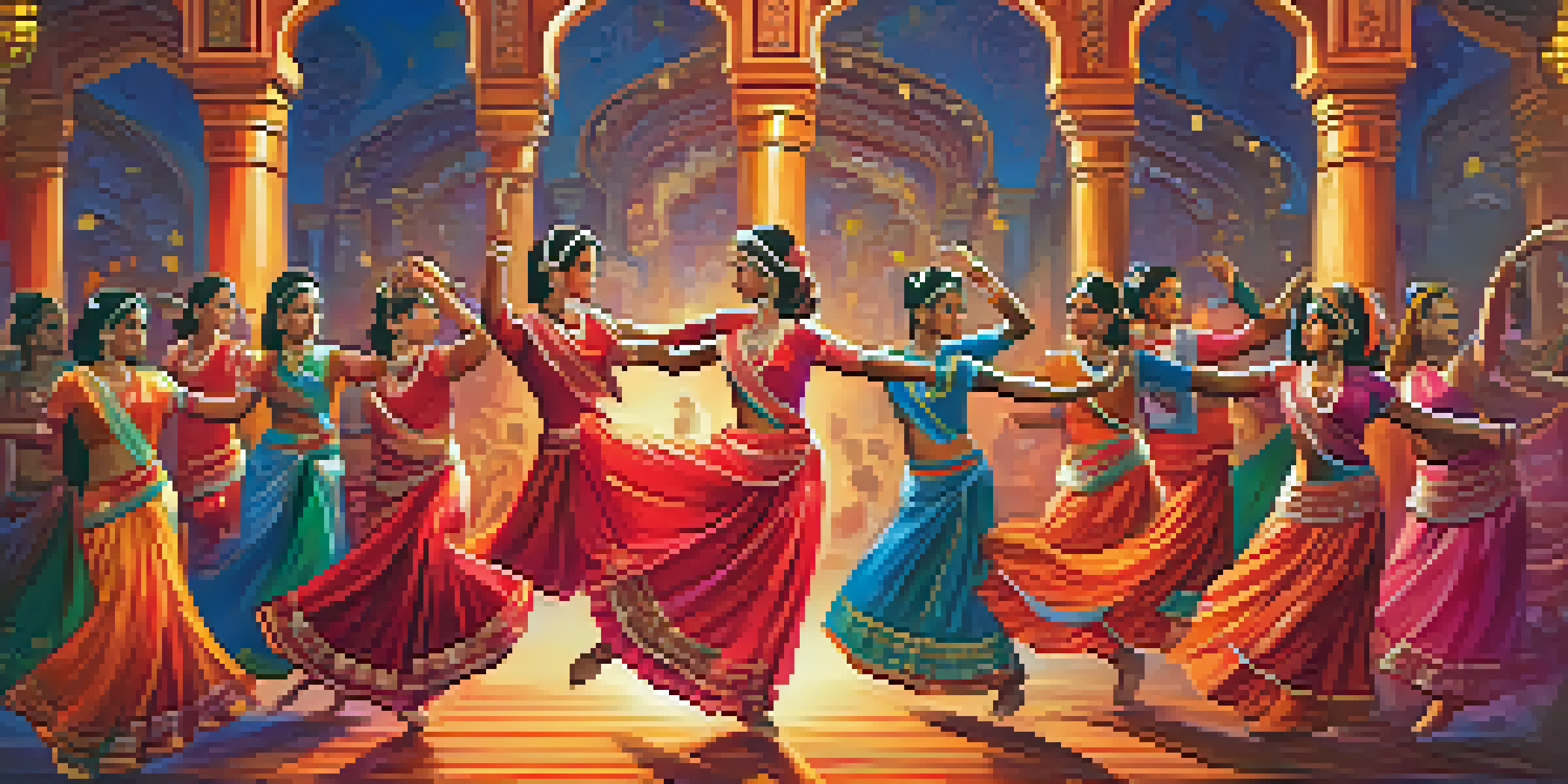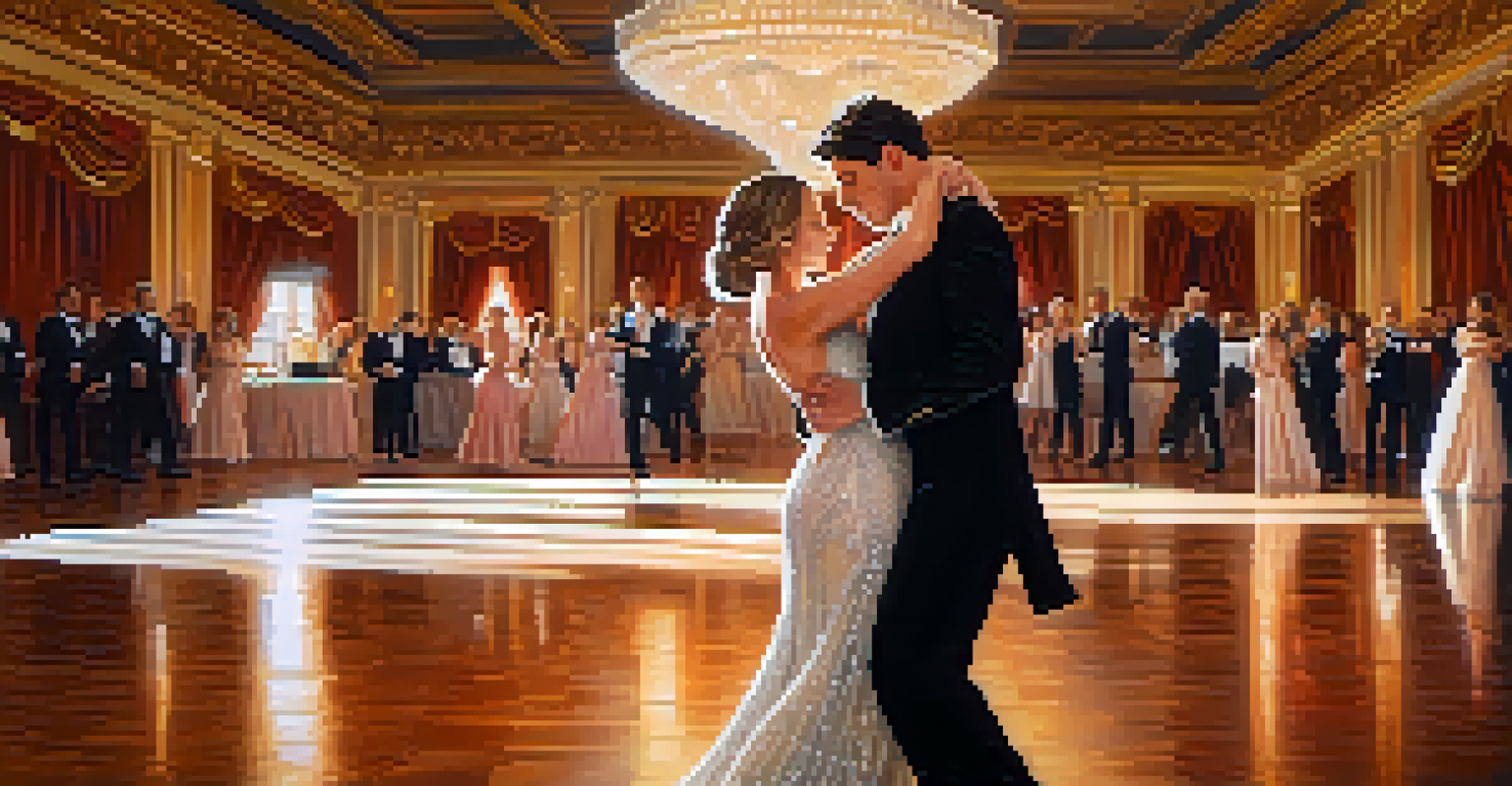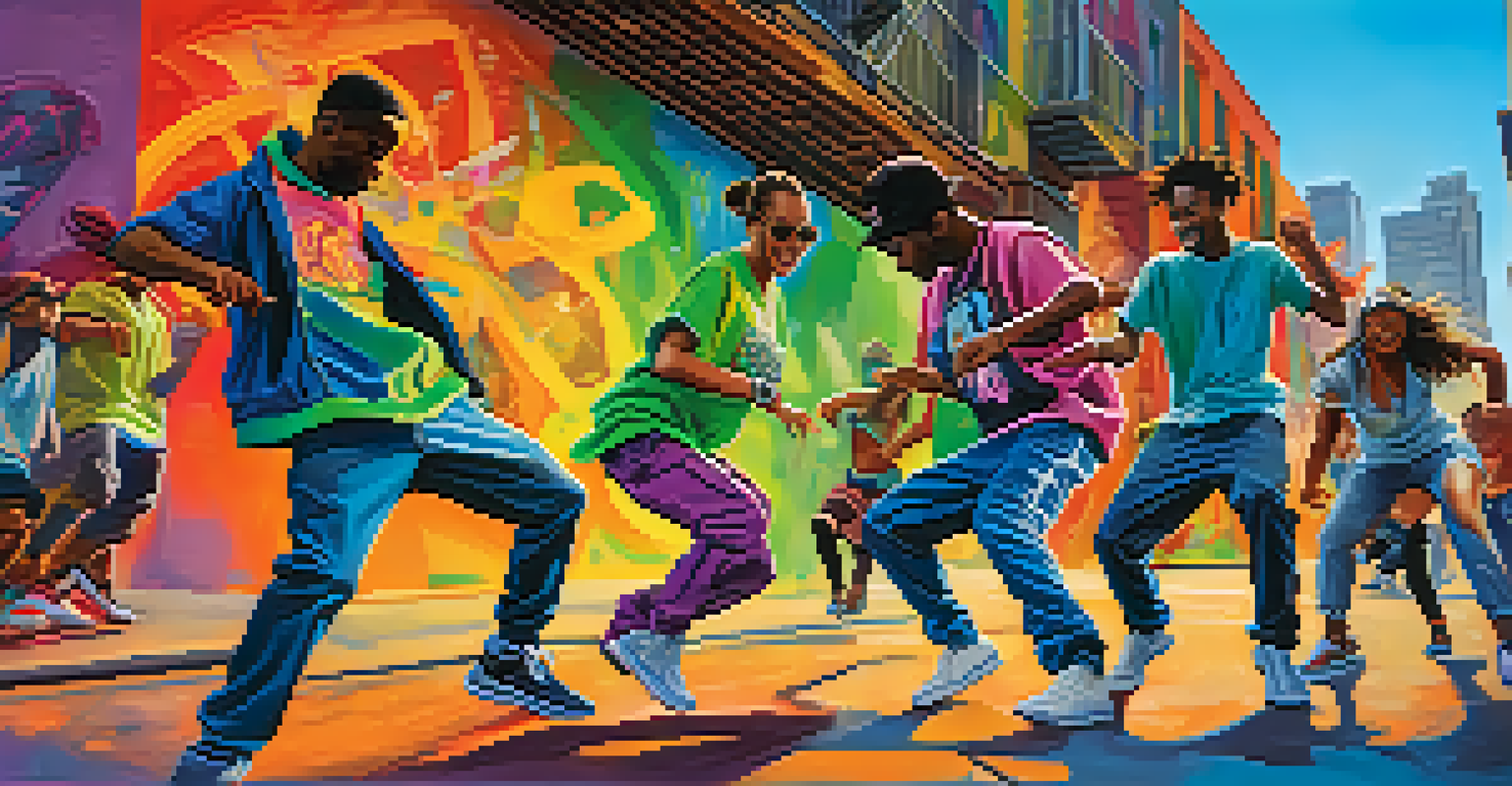Choreography in Film: Crafting Memorable Dance Moments

The Role of Choreography in Film Storytelling
Choreography in film is not just about movement; it's a vital storytelling tool. Dance sequences can convey emotions and plot points that dialogue sometimes cannot. For instance, in movies like 'La La Land,' the dance scenes beautifully illustrate the characters' aspirations and struggles.
Dance is the hidden language of the soul.
When choreography is expertly woven into the narrative, it elevates the overall experience for the audience. Imagine a heartfelt moment expressed through a slow dance, where every movement reflects the characters' inner feelings. It’s this connection that makes choreography essential in film.
Moreover, choreography helps to create memorable moments that resonate with viewers long after the credits roll. Think of iconic dance scenes, like the 'Time Warp' from 'The Rocky Horror Picture Show'—these moments become part of pop culture, demonstrating the enduring power of dance in cinema.
Elements of Effective Dance Choreography
Creating effective dance choreography involves several key elements, including rhythm, space, and emotion. A choreographer must consider the music’s beat and how dancers move in relation to it. This synchronization ensures that the performance feels cohesive and impactful.

Additionally, the use of space in choreography is crucial. Dancers must navigate their environment, whether it's a grand ballroom or a cramped apartment, which can enhance the storytelling aspect. For example, in 'Black Swan,' the tight spaces reflect the character's constricted mental state.
Choreography Enhances Storytelling
Dance sequences convey emotions and narratives that dialogue sometimes cannot, making choreography a vital storytelling tool in film.
Lastly, emotion plays a significant role in choreography. Each movement should tell a story, expressing feelings like joy, sorrow, or tension. The best choreographed scenes invite viewers to feel alongside the characters, connecting them to the narrative on a deeper level.
Iconic Dance Scenes that Shaped Cinema
Throughout film history, there have been iconic dance scenes that have left an indelible mark on audiences and filmmakers alike. Think of 'Singin' in the Rain,' where Gene Kelly’s exuberant dance embodies pure joy and optimism. This scene has inspired countless homages and parodies, showcasing its lasting influence.
Choreography is the art of making movements speak.
Another memorable moment is the dance-off in 'Footloose,' which captures the spirit of rebellion and freedom. This scene not only defines the film but also resonates with viewers who yearn to break free from societal constraints. Such scenes remind us of the power of dance to evoke strong emotions.
These iconic moments also highlight how choreography can transcend cultural boundaries, making dance a universal language. Whether it's the salsa in 'Dirty Dancing' or the hip-hop moves in 'Step Up,' these scenes often become benchmarks in cinema, inspiring future generations of filmmakers and dancers.
Collaboration Between Choreographers and Filmmakers
The collaboration between choreographers and filmmakers is essential for creating memorable dance moments in film. Choreographers bring their expertise in movement to the table, while directors provide the vision to ensure that the dance fits seamlessly into the narrative. This teamwork can lead to remarkable results that enhance both the choreography and the overall film.
For example, in 'West Side Story,' the collaboration between Jerome Robbins and the film's directors resulted in groundbreaking dance sequences that pushed the boundaries of what musical films could achieve. Their partnership ensured that each dance number advanced the story and developed the characters.
Collaboration Drives Dance Innovation
The partnership between choreographers and filmmakers is essential for creating memorable dance moments that enhance the overall narrative.
Such collaborations often require open communication and a shared understanding of the film’s themes. When choreographers and filmmakers align their creative visions, the result can be a powerful combination that captivates audiences and leaves a lasting impression.
The Impact of Music on Dance Choreography
Music is a fundamental element of dance choreography in film, serving as both inspiration and guide for movement. The rhythm, tempo, and mood of the music can dramatically influence how dancers express themselves. For instance, a fast-paced song might lead to energetic and lively choreography, while a slow ballad could elicit more fluid and emotional movements.
Moreover, the integration of music and choreography can enhance the storytelling aspect of a film. In 'Mamma Mia!,' the ABBA songs dictate the flow of the dance sequences, making them feel organic and essential to the narrative. This synergy creates a more immersive experience for the audience.
Ultimately, the right music not only complements the choreography but also elevates the emotional impact of the scene. When viewers can feel the connection between the dance and the music, it fosters a deeper engagement with the film and its characters.
Choreography as a Reflection of Cultural Identity
Choreography often serves as a reflection of cultural identity, showcasing the diversity of dance styles and traditions in film. Different cultures have unique dance forms that tell their own stories and convey their values. For example, the vibrant Bollywood dance sequences in films like 'Dil Se' highlight the rich cultural heritage of India.
Incorporating various dance styles into films allows filmmakers to celebrate cultural differences and promote inclusivity. 'Coco' beautifully showcases Mexican culture through its traditional dances, enriching the viewer's understanding of the customs and traditions depicted in the film.
Cultural Reflection Through Dance
Choreography showcases diverse dance styles that reflect cultural identities, promoting inclusivity and educating audiences about different traditions.
By embracing diverse choreography, filmmakers can create a more authentic representation of their characters and stories. This not only enhances the film's narrative but also educates audiences about different cultures, fostering appreciation and understanding.
The Future of Dance Choreography in Film
As technology continues to advance, the future of dance choreography in film is likely to evolve in exciting ways. Innovations like motion capture and digital effects can create stunning visuals that were previously unimaginable. Filmmakers are increasingly experimenting with these technologies to push the boundaries of traditional choreography.
Moreover, the rise of social media platforms has democratized dance, allowing new choreographers to showcase their work to a global audience. This shift is encouraging diverse voices and styles, enriching the landscape of choreography in film. For example, TikTok has birthed trends that influence mainstream dance sequences in movies.

Looking ahead, we can expect to see more collaborative efforts between choreographers, filmmakers, and technology experts. This fusion will likely lead to groundbreaking dance moments that captivate audiences and redefine the way we experience dance in cinema.